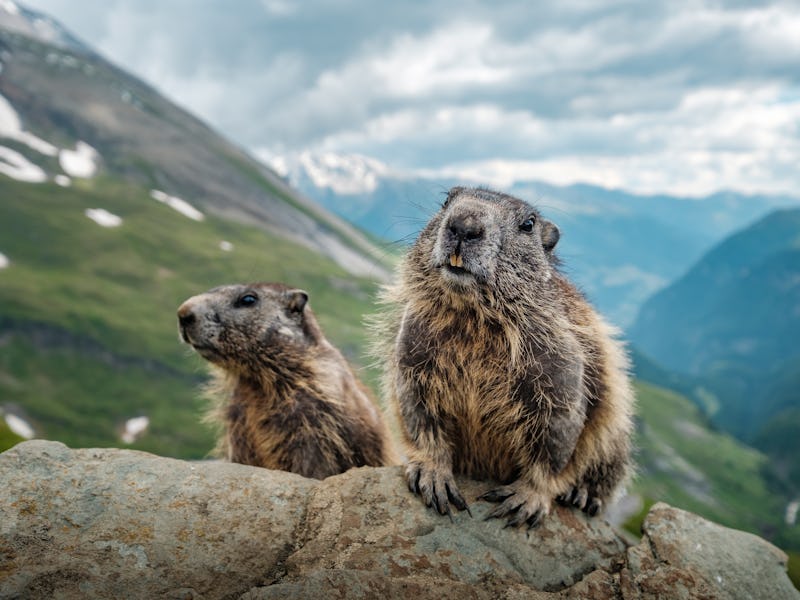A ridiculously fluffy rodent may hold the secret to longevity
Long live the yellow-bellied marmot!

If you’ve ever beheld the visage of musician Lenny Kravitz or actor Jennifer Aniston, you know that aging might not treat everyone equally (especially if you can afford eternal youth).
This disparity gets at the difference between one’s chronological age — how old they are in years — and their biological age, which is how their body has aged naturally and in response to its environment. The two can diverge in ways that are either blessings or curses. Hence why those who grow up under extreme stress or in polluted environments may look much older than they actually are.
And yellow-bellied marmots can tell us something about these two ages.
Yellow-bellied marmots (Marmota flaviventer) are no burrow-dwelling meteorologists like the groundhog. They may sound craven, but these quirky critters, also known as whistle pigs, make for fascinating subjects: the cat-sized rodents have a longer lifespan than expected for a mammal of their size. On average, marmots live 15 years.
For nine months of the year, these cuties steel their fuzzy yellow bellies against the cold Rocky Mountain winters in deep hibernation. Many mammals hibernate, like bears and squirrels, but marmots have some of the longest hibernation seasons. Hibernation may do more than protect animals from the elements during times of food scarcity. It could stall aging entirely.
A new study from a team at the University of California, Los Angeles published in the journal Nature in early March tests the hypothesis that while these marmots hibernate, they stop aging biologically entirely. Hibernators, the researchers surmise, could be onto something.
What’s new — Indeed, the study’s results were consistent with the hypothesis that biological aging halts in hibernation.
Hibernation isn’t just sleeping in; it’s a physiological state. When a marmot hibernates, its metabolism dramatically slows, and its body temperature can drop to 5 degrees Celsius, or just above freezing. It burns up to a gram of fat per day, according to supervising author and UCLA biology professor Dan Blumstein, which is hefty for a 6-kilogram (13-pound) rodent. This transformation changes the animal entirely.
“It feels like a cold, fuzzy rock,” Blumstein says. Turning into a cold rock can halt lots of processes that hasten aging.
The study’s lead author, Gabriela Pinho, tracked 73 marmots’ biological aging process by looking at their epigenetic changes, which are the many natural alterations that occur to one’s DNA over time. She examined the shifts by following an epigenetic marker.
“It’s currently the best marker that we have to estimate biological aging,” she says. “They are the most accurate.” Pinho completed this study as a Ph.D. fellow at UCLA. She now works in Brazil for the environmental NGO Instituto de Pesquisas Ecológicas.
She found that there had been few epigenetic changes during hibernation, which signifies the marmots’ biological age had not budged.
Why it matters — Biologists understand hibernation as an adapted survival strategy. It would make sense to believe that part of a marmots’ longevity comes from the fact that they spend more than half a calendar year protected in their burrows. They can’t be roadkill if they don’t cross the road, right?
Pinho’s approach to studying marmot longevity looked at a biological mechanism in addition to environmental factors. To her knowledge, her team is the first to consider epigenetic markers as a signpost for marmot aging during hibernation.
“We’re just trying to understand how life works, how they can reach this much higher longevity than other species,” she says.
The new study is the first to consider epigenetic markers as a signpost for marmot aging during hibernation.
Digging into the details — Hibernation comprises two states: torpor and arousal. Torpor would be when the animal’s metabolism is suppressed, and arousal is the few critical moments it's active. Think of it as the few moments on a lazy day when you only get out of bed to pee or get a snack.
Some studies try to mimic the physiology of hibernation, calling it synthetic torpor. One study was able to make rats, non-hibernating creatures, hibernate.
Sci-fi fans may be thinking about how synthetic torpor can be used on humans during long space flights. NASA’s way ahead of you. Induced hibernation could potentially get astronauts to parts of the galaxy that our lifespan wouldn’t support a trip for.
What’s next — At the Instituto de Pesquisas Ecológicas, Pinho will study tapirs, which are mystifying animals that look like pigs with trunks, and are the size of a donkey. They’re related to horses and rhinos, and most species dwell in the jungles of Central and South America.
The next Ph.D. candidate taking Pinho’s place at UCLA will look at how climate change is affecting hibernation. If climate change alters the marmots’ environment, it could also alter their hibernation clock. For example, shorter winters mean shorter hibernation periods, which could mean shorter lifespans because they’re not in this period of suspended animation for as long.
Blumstein is looking forward to seeing the marmots emerge from their stupor. “In April, we're about to ski out and start watching them emerge from hibernation, which is good fun,” he says. “Sometimes you see them come out, and they're fat and happy and healthy-looking.”
If you believe in reincarnation, consider being a yellow-bellied marmot in your next life.